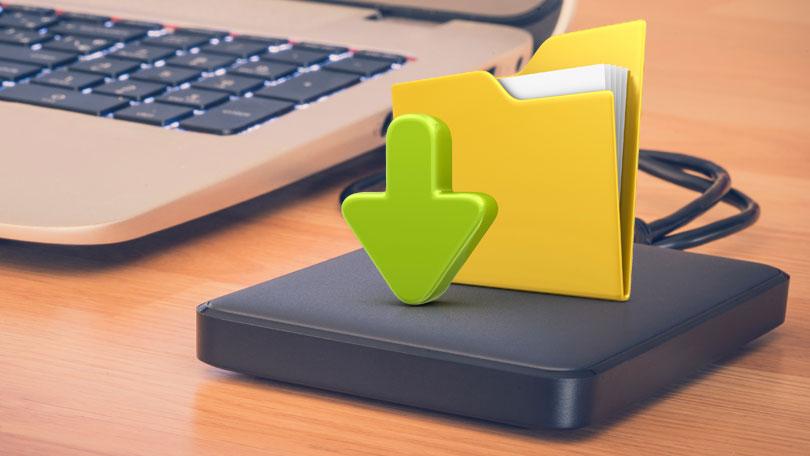
- Temporary large data backup storage how to#
- Temporary large data backup storage archive#
- Temporary large data backup storage free#
AOF also needs to fork() but less frequently and you can tune how often you want to rewrite your logs without any trade-off on durability. fork() can be time consuming if the dataset is big, and may result in Redis stopping serving clients for some milliseconds or even for one second if the dataset is very big and the CPU performance is not great. RDB needs to fork() often in order to persist on disk using a child process.However you'll usually create an RDB snapshot every five minutes or more, so in case of Redis stopping working without a correct shutdown for any reason you should be prepared to lose the latest minutes of data. You can configure different save points where an RDB is produced (for instance after at least five minutes and 100 writes against the data set, you can have multiple save points). RDB is NOT good if you need to minimize the chance of data loss in case Redis stops working (for example after a power outage).On replicas, RDB supports partial resynchronizations after restarts and failovers.RDB allows faster restarts with big datasets compared to AOF.The parent process will never perform disk I/O or alike. RDB maximizes Redis performances since the only work the Redis parent process needs to do in order to persist is forking a child that will do all the rest.RDB is very good for disaster recovery, being a single compact file that can be transferred to far data centers, or onto Amazon S3 (possibly encrypted).This allows you to easily restore different versions of the data set in case of disasters.
Temporary large data backup storage archive#
For instance you may want to archive your RDB files every hour for the latest 24 hours, and to save an RDB snapshot every day for 30 days.
Temporary large data backup storage how to#
To learn more about how to evaluate your Redis persistence strategy, read on. If you'd rather not think about the tradeoffs between these different persistence strategies, you may want to consider Redis Enterprise's persistence options, which can be pre-configured using a UI.

So Photoshop saves a lot of your work to local "scratch" files. Photoshop is a program that works with a lot of data at once, and not all of that data can be kept in your computer's memory alone. And the worst part is that the program gives no indication of how much junk it's accumulating-you'll have to manually search for the files (or use a tool like SpaceSniffer) to discover the real impact to your storage.

Bigger and more frequent projects exacerbate the problem I've seen my own Photoshop temp files eat over 50GB of space. But that doesn't even touch the space that Photoshop's temp files can eat up. Photoshop is already a huge program, with a recommended installation size of 1.6GB (not including another 6-10GB or so if you have the rest of the Creative Suite).
Temporary large data backup storage free#
Related: The 4 Best Free Tools to Analyze Hard Drive Space on Windows


 0 kommentar(er)
0 kommentar(er)
